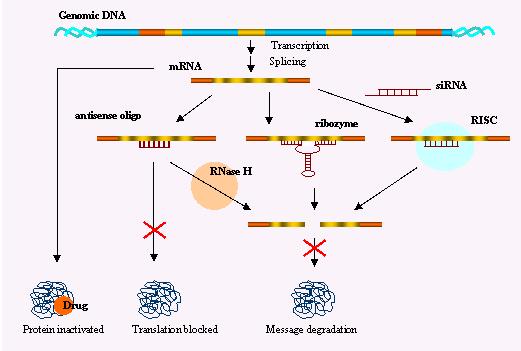 |
 |
||||||
   |
|
|
Gene Silencing
|
Gene SilencingIntroduction
Gene silencing. Comparison of different gene silencing strategies.
Comparison of gene silencing strategies 
Note: antisense and RNAi are refered as gene knockdown technologies: the transcription of the gene is unaffected; however, gene expression, i.e. protein synthesis, is lost because mRNA molecules become unstable or unaccessible. Furthermore, RNAi is based on naturally occurring phenomenon known as Post-Transcriptional Gene Silencing (PTGS). Probe
Sample QueriesResources» About RNA interference in PubMed » About antisense oligonucleotides in PubMed » RNA interference technology overview |
Questions or Comments?
E-mail the NCBI Service Desk